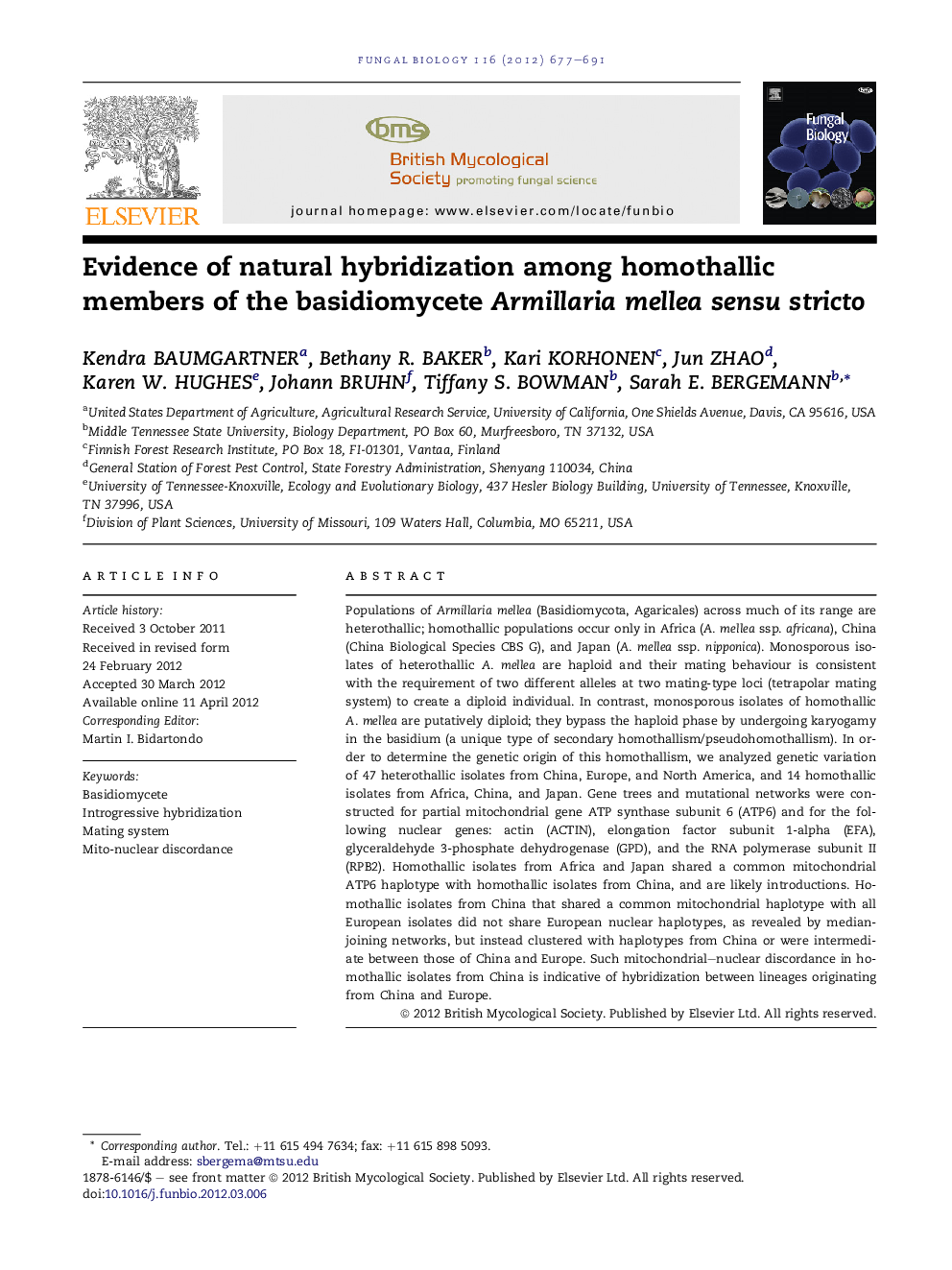| Article ID | Journal | Published Year | Pages | File Type |
|---|---|---|---|---|
| 4357098 | Fungal Biology | 2012 | 15 Pages |
Populations of Armillaria mellea (Basidiomycota, Agaricales) across much of its range are heterothallic; homothallic populations occur only in Africa (A. mellea ssp. africana), China (China Biological Species CBS G), and Japan (A. mellea ssp. nipponica). Monosporous isolates of heterothallic A. mellea are haploid and their mating behaviour is consistent with the requirement of two different alleles at two mating-type loci (tetrapolar mating system) to create a diploid individual. In contrast, monosporous isolates of homothallic A. mellea are putatively diploid; they bypass the haploid phase by undergoing karyogamy in the basidium (a unique type of secondary homothallism/pseudohomothallism). In order to determine the genetic origin of this homothallism, we analyzed genetic variation of 47 heterothallic isolates from China, Europe, and North America, and 14 homothallic isolates from Africa, China, and Japan. Gene trees and mutational networks were constructed for partial mitochondrial gene ATP synthase subunit 6 (ATP6) and for the following nuclear genes: actin (ACTIN), elongation factor subunit 1-alpha (EFA), glyceraldehyde 3-phosphate dehydrogenase (GPD), and the RNA polymerase subunit II (RPB2). Homothallic isolates from Africa and Japan shared a common mitochondrial ATP6 haplotype with homothallic isolates from China, and are likely introductions. Homothallic isolates from China that shared a common mitochondrial haplotype with all European isolates did not share European nuclear haplotypes, as revealed by median-joining networks, but instead clustered with haplotypes from China or were intermediate between those of China and Europe. Such mitochondrial–nuclear discordance in homothallic isolates from China is indicative of hybridization between lineages originating from China and Europe.
► We find evidence for hybridization in homothallic A. mellea from China and Europe. ► Hybrids were identified by mitochondrial introgression and nuclear genetic discordance. ► China is the likely centre of origin of homothallism in A. mellea. ► Homothallic A. mellea from Africa was likely a human-mediated introduction from Japan.
